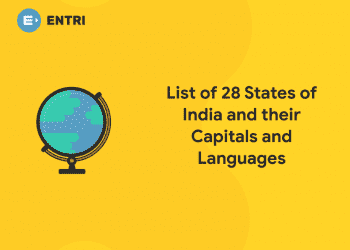Table of Contents
Key Takeaways:
- CMA USA in 2026 offers a powerful blend of management accounting, analytics, and strategy, making it ideal for those who want to move beyond traditional accounting roles.
- The qualification is globally recognized and opens doors to careers in multinational companies, Big 4 firms, and diverse industries across regions.
- With only two exam parts and a focused syllabus, CMA USA can be completed in a relatively short duration, even alongside a full-time job.
- CMAs often enjoy higher salary growth, faster progression into managerial roles, and better job security in a rapidly changing economic and technological landscape.
- The 2026 syllabus updates make CMA USA even more future-ready by integrating technology, analytics, ESG, and digital finance themes.
Introduction
Becoming a CMA USA in 2026 can significantly boost your salary, open global career opportunities, and fast-track you into strategic and leadership finance roles across industries. It is a globally recognized, future-ready credential that blends accounting, analytics, business strategy, and technology, making it one of the most powerful finance qualifications for the next decade.
In a world where businesses are becoming more data-driven, digital-first, and globally connected, finance professionals are no longer expected to just “handle accounts” – they are expected to guide decisions. If you’re someone who does not want to remain stuck in entry-level accounting work forever, but instead wants to influence business strategy, drive performance, and be in the room where important decisions are made, the CMA USA can be a genuine game-changer.
What Is CMA USA and its relevance in 2026?
1: Accounting provides information on
The CMA USA (Certified Management Accountant) is a professional certification offered by the Institute of Management Accountants (IMA), USA, focused on management accounting, financial planning, performance management, and strategic decision-making. It has two exam parts: Part 1 – Financial Planning, Performance & Analytics, and Part 2 – Strategic Financial Management, both structured to mirror real-world business scenarios.
You might also like: CMA USA Course Details
From 2026 onwards, the CMA USA syllabus and exam pattern emphasize not just traditional costing and budgeting, but also technology, analytics, ESG (Environmental, Social, Governance), risk management, and digital transformation topics. This means candidates are trained to work in modern finance environments where tools like data analytics platforms, automation, and AI-driven insights are becoming the norm rather than the exception.
The exam consists of two 4-hour papers, each with 100 multiple-choice questions and 2 essay scenarios, with a passing score of 360/500 per part and a requirement to clear at least 50% of the MCQs to progress to the essay section. Eligibility generally includes a bachelor’s degree, IMA membership, and at least two years of relevant work experience, which can be completed before or within seven years of clearing the exams.
Enroll in Entri’s USA CMA course now!
Placement Oriented PWC Business Accounting Course
PWC Certified Business Accounting Course by Entri App: Master in-demand skills, ace interviews, and secure top-tier jobs.
Join Now!Top 10 Reasons to Become a CMA USA in 2026
1. Global Recognition and Career Mobility
The CMA USA credential is widely recognized across more than a hundred countries and is particularly valued in multinational corporations, Big 4 consulting firms, shared service centers, and global capability centers. Rather than limiting you to purely US regulatory frameworks (like some public accounting qualifications), CMA is oriented towards internal management, performance, and strategy, which makes it relevant in diverse markets including India, the Middle East, Europe, and Southeast Asia.
Because it focuses on universal management accounting concepts—like performance analysis, cost management, forecasting, and strategic planning—its applicability cuts across borders and industries. This is why CMAs frequently find roles in multinational companies that operate in multiple geographies and require finance professionals who understand both numbers and business drivers.
2. High Salary Potential and Faster Earning Growth
On average, CMA USA professionals tend to earn significantly more than their non-certified peers due to the strategic nature of their roles. In markets like India, entry-level or early-career CMA USA holders often see packages that range notably higher than typical B.Com or M.Com graduates in accounting roles, especially when they enter MNCs, Big 4 firms, or global finance hubs.
Mid-career CMAs who combine the certification with a few years of solid experience in FP&A, controllership, consulting, or business partnering often see a sharp jump in compensation and bonuses. In countries like the US and UAE, CMAs frequently move into roles that command higher base salaries plus performance-linked incentives, stock options, and benefits, which together make the overall compensation package very attractive when compared with traditional accounting roles.
| Experience Level | CMA USA Salary (India) | CMA USA Salary (USA) |
|---|---|---|
| Entry-Level | ₹6–12 LPA | $60,000–$80,000 |
| Mid-Level | ₹15–25 LPA | $90,000–$120,000 |
| Senior-Level | ₹30–40 LPA+ | $120,000–$150,000+ |
3. Strategic and Analytical Skill Development
CMA USA is designed to turn finance professionals into business partners rather than just back-office accountants. The curriculum trains you in areas such as decision analysis, variance analysis, cost control, risk assessment, performance management, capital budgeting, and long-term financial planning, helping you understand not only what the numbers say but what they mean for the business.
With the 2026 updates, there is stronger emphasis on analytics, technology, and data interpretation, teaching candidates how to work with dashboards, forecasts, and KPIs to support senior management decisions. This combination of technical accounting knowledge plus analytical and strategic thinking is precisely what employers look for in roles like FP&A analyst, business analyst, financial controller, and finance manager.
Get a head start by exploring our free materials platform now!
4. Fast Track to Leadership and Decision-Making Roles
Yes, because CMA USA is built around the idea of “management” accounting rather than compliance-focused reporting, it tends to align naturally with roles that sit closer to leadership. Many professionals use CMA to progress from junior roles like accounts executive or general accountant to positions such as senior analyst, finance manager, plant controller, and eventually CFO or head of finance.
Its coverage of topics like corporate finance, investment decisions, professional ethics, and strategic planning prepares you to participate in boardroom discussions, budgeting cycles, and long-term business planning. In many organizations, CMAs are trusted to take ownership of P&L management, performance dashboards, cost optimization projects, and scenario planning, all of which are critical stepping stones to leadership.
5. Short Duration and Flexible Learning Path
One of the biggest advantages of CMA USA is that it can be completed in a relatively short span of time compared to many other professional courses. With focused preparation, many candidates are able to clear both parts in about 6–12 months, while a more comfortable timeline would be in the 12–18 month range. The IMA typically allows a window of up to three years from registration to complete both exam parts.
The exam is offered in multiple windows during the year (traditionally January–February, May–June, and September–October), giving candidates flexibility to choose dates around academic schedules or work commitments. Because there are only two parts and the content is well-structured, working professionals can balance preparation with full-time jobs using a disciplined study plan and guided coaching support.
6. Wide Career Opportunities Across Industries
While management accounting historically grew out of cost accounting in manufacturing environments, CMA USA today is relevant across a wide range of industries. CMAs are employed in IT and technology companies, healthcare systems, retail chains, FMCG, energy, logistics, financial services, e-commerce, and even start-ups and unicorns that require strong financial planning and performance management.
Typical roles for CMA USA professionals include:
- Financial Planning & Analysis (FP&A) Analyst or Manager
- Cost Accountant or Cost Controller
- Business Analyst or Commercial Finance Analyst
- Financial Controller or Plant Controller
- Budgeting and Forecasting Specialist
- Treasury and Corporate Finance roles
Because organizations in every sector now rely on real-time numbers, dashboards, and scenario analysis, the need for professionals who can interpret financial data and recommend actions continues to increase.
7. Strong Professional Network and Continuous Learning
As a CMA USA candidate or member, you become part of the global IMA (Institute of Management Accountants) network, which includes professionals across regions and industries. This network offers access to local chapters, industry events, webinars, conferences, and mentoring opportunities, which can be extremely valuable for job changes, career growth, and skill upgrades.
Moreover, maintaining the CMA credential requires ongoing Continuing Professional Education (CPE), which encourages lifelong learning. This means you continuously stay updated on new regulations, technologies, analytical tools, and best practices in finance and management, making you more relevant and competitive in the job market even many years after qualifying.
Also read: Top Indian Companies Hiring CMA USA
8. Higher Job Security and Global Mobility
When economies slow down, organizations often cut back on routine, low-value roles first and retain people who contribute directly to strategy, performance, and cost optimization. CMA USA professionals, by design, sit closer to decision-making and value creation, which often makes their roles more resilient compared to purely transactional positions.
Because the certification is globally recognized, it also offers mobility—if opportunities are limited in one location, CMAs can explore roles in other regions or remotely for global companies. In many markets, holding a reputed professional credential is also valued by immigration and work visa systems, as it signals specialized skills and professional credibility, further enhancing long-term career security and mobility.
Read in detail: Career Opportunities After CMA
9. Future-Ready: AI, Automation, ESG, and Digital Finance
Yes—if anything, CMA USA has become more relevant because the nature of finance work is changing. Automation can handle repetitive tasks like data entry, reconciliations, and standard reporting, but humans are still needed to interpret information, ask the right questions, evaluate trade-offs, and make strategic decisions. CMA USA prepares you precisely for this higher-value layer of work.
The latest syllabus and industry expectations emphasize technology and analytics, ESG and sustainability reporting, risk management, and digital tools like data visualization and cloud-based finance platforms. This means you are not being trained for tasks that will be automated away, but for roles that require judgment, communication, and strategic thinking—capabilities that organizations will continue to pay a premium for.
10. Clear, Structured Pathway to a Global Finance Career
If you begin CMA USA in 2026, a typical progression might look like this over the next decade:
- 0–2 years: Graduate trainee / junior analyst/accounts executive transitioning into a CMA-focused role.
- 2–5 years: Financial analyst, cost accountant, FP&A analyst, or management accountant handling ownership of reports, planning, and analysis.
- 5–8 years: Finance manager, plant controller, business finance partner, or senior analyst with responsibility for budgets, forecasts, and performance.
- 8–10+ years: Senior finance manager, head of finance, CFO-track roles, or specialized positions in corporate strategy, M&A, or global FP&A.
Because the course is compact and intensely focused on strategic finance, you do not have to wait many years to see its impact; many candidates start seeing better roles and salary jumps shortly after clearing one or both parts, especially when combined with internships or relevant work experience.
CMA USA vs CPA vs ACCA: Where Does CMA Stand?
Broadly speaking, CPA is more focused on public accounting, auditing, and external reporting, whereas ACCA offers a broad-based accounting and auditing framework with global recognition. CMA USA, in contrast, is sharply focused on management accounting and strategic finance inside organizations.
If your goal is to work in audit firms, statutory reporting, or taxation, CPA or ACCA may be better aligned. But if you see yourself working inside companies in roles like FP&A, business partnering, performance management, or eventually CFO, CMA USA offers a more direct and concentrated pathway. Many professionals even choose combinations such as CMA + CPA or CMA + ACCA to cover both internal and external dimensions of finance for broader career options.
| Certification | Focus Area | Duration | Global Recognition | Typical Salary (India) | Typical Salary (USA) |
|---|---|---|---|---|---|
| CMA USA | Management Accounting | 6–18 months | 150+ countries | ₹8–40 LPA | $60,000–$150,000 |
| CPA | Public Accounting | 2–3 years | Globally, mostly USA | ₹7–30 LPA | $70,000–$130,000 |
| ACCA | Global Accounting | 2.5–3 years | 180+ countries | ₹5–25 LPA | $50,000–$100,000 |
How to Become a CMA USA: Step-by-Step in 2026
A typical pathway looks like this:
-
Check Eligibility
- Ensure you either have or are pursuing a bachelor’s degree from a recognized institution (any discipline is usually accepted).
- Plan to gain at least two years of relevant work experience in management accounting or financial management, either before or within seven years after passing the exams.
-
Join IMA and Enroll as a CMA Candidate
- Take membership with the Institute of Management Accountants (IMA).
- Enroll in the CMA program formally, which gives you access to the exam system and official guidelines.
-
Register for Exams (Part 1 and Part 2)
- Decide which part to take first based on your strengths (many prefer Part 1 first, but it is flexible).
- Register for the chosen part in a testing window that matches your preparation timeline.
Read in detail: CMA USA Exam Dates
-
Prepare with a Structured Study Plan
- Use a combination of coaching, video lectures, textbooks, question banks, and mock exams.
- Aim for consistent study hours weekly, with more intensive practice closer to the exam date.
-
Appear for Exams and Clear Both Parts
- Attempt 100 MCQs and two essay scenarios within 4 hours per part.
- Track your score and plan retakes, if required, within the allowed time frame.
-
Complete Experience and Get Certified
- Once both parts are cleared and work experience criteria are met, you receive the CMA credential.
- Maintain your certification via annual membership renewal and CPE hours.
Also read: How to Prepare for the CMA Exam: The Ultimate Guide
Placement Oriented PWC Business Accounting Course
PWC Certified Business Accounting Course by Entri App: Master in-demand skills, ace interviews, and secure top-tier jobs.
Join Now!Entri’s CMA USA Course: Your Partner for a Global Finance Career
Entri’s CMA USA course is designed to support Indian and particularly Kerala-based learners who want structured, practical training aligned with the updated CMA syllabus and industry expectations. It focuses not just on helping you clear the exams but also on preparing you for real-world finance roles after certification.
Key highlights you can feature:
- Expert-Led Classes: Learn from experienced faculty who understand both exam patterns and practical industry applications, making complex topics like variance analysis, capital budgeting, and analytics easier to grasp.
- Updated Content for 2026 Syllabus: The course covers the latest CMA USA curriculum, including technology, analytics, ESG, and risk management, so you are fully aligned with the new exam and job market expectations.
- Flexible Learning Experience: With online classes, recorded sessions, doubt-clearing support, and structured study plans, Entri’s program is suitable for both students and working professionals.
- Placement Assistance and Career Support: Entri offers placement assistance, interview preparation, resume guidance, and career counseling to help you transition from learning to earning. This is especially valuable if you are looking to move from a basic accounts role into FP&A, management accounting, or corporate finance.
- Mock Tests, Question Practice, and Exam Strategy: The course includes regular tests, mock exams, and performance tracking, helping you identify weak areas early and build confidence before the actual exam.
By the time you complete Entri’s CMA USA course, you are not only prepared to clear both parts of the exam but are also better equipped to present yourself as a strong candidate to employers across industries.
Conclusion
If you are serious about building a high-growth career in finance, 2026 is an excellent time to commit to CMA USA. It gives you a structured, globally respected pathway from basic accounting work to strategic, analytical, and leadership roles that are aligned with the future of business and technology.
Instead of waiting for the “right opportunity” to appear on its own, taking the initiative to pursue CMA USA can shift you onto a different trajectory altogether—one where you are valued not just for tallying numbers, but for influencing decisions that shape the direction of entire organizations. Combined with the right training partner, such as Entri’s CMA USA course with placement assistance and guided support, this decision can be one of the most impactful investments you make in your professional life.
Placement Oriented PWC Business Accounting Course
PWC Certified Business Accounting Course by Entri App: Master in-demand skills, ace interviews, and secure top-tier jobs.
Join Now!Frequently Asked Questions
Is CMA USA suitable for fresh graduates, or should I gain work experience first?
CMA USA is suitable for both fresh graduates and working professionals. Many students start preparation during their degree or immediately after graduation so that by the time they accumulate two years of experience, they are already exam-qualified and ready to receive their certification.
Can I do CMA USA along with a job?
Yes, the structure of the course, with only two parts and flexible exam windows, is well-suited for working professionals. With a realistic study plan, supportive training, and disciplined time management, thousands of candidates successfully clear CMA USA while working full time.
Do I need a commerce background to pursue CMA USA?
A commerce background can help, but it is not mandatory. Candidates from engineering, science, and other fields also pursue CMA USA, provided they are ready to put in extra effort initially to understand accounting fundamentals. The key is consistency and good guidance.
What kind of roles can I expect immediately after clearing CMA USA?
You can aim for roles such as management accountant, junior FP&A analyst, financial analyst, costing analyst, or associate in finance departments of corporates, shared service centers, and consulting firms. Over time, this can evolve into finance manager, controller, business partner, or CFO-track positions.
Is CMA USA better than an MBA in finance?
They serve slightly different purposes. CMA USA is a specialized professional credential in management accounting and strategic finance, while an MBA is broader and includes areas like marketing, HR, and operations. Many professionals choose CMA USA for strong technical finance grounding and later consider an MBA for broader management exposure, or combine both for maximum impact.
















